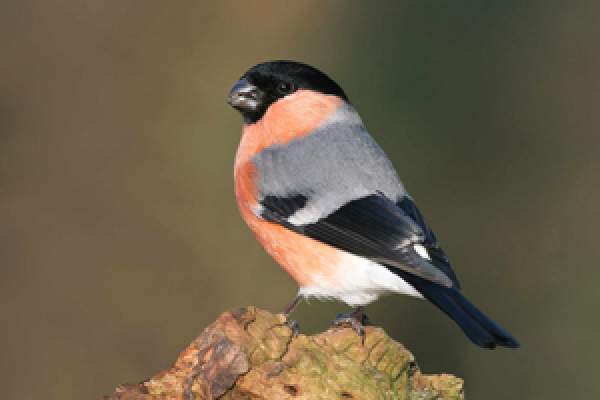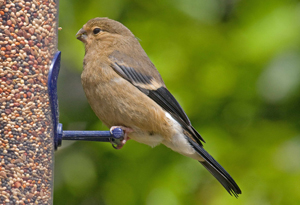Bullfinch

Pyrrhula pyrrhula
The Bullfinch is a medium-sized to large finch, round in shape with a large, robust bill.
Both adult males and females have a black cap that extends forward around the bill, together with a grey back, black wings (with a grey-white wing bar), black tail and white rump.
The underparts of the adult male are rose-red, while those of the female (pictured left) and juveniles (pictured below) are pinkish-grey.
Juvenile Bullfinches have a brown head, lacking the black cap of the adults, but show similar wing, rump and tail markings.
The call note is a low, piping ‘deu-deu’ (sometimes ‘deu’), while the song is highly variable, though usually quiet in nature and audible only over short distances.
Female Bullfinch
Juvenile Bullfinch
Bullfinches appear to have a well-developed pair bond, often maintained throughout the year. Within Britain, the species breeds mainly in deciduous woodland, but it will also use large gardens, thickets and churchyards. Bullfinches are shy birds, rarely seen in the open and seemingly visiting only those gardens that can be accessed via suitably thick cover, hence a Garden BirdWatch reporting rate typically well under 10%.
The nest is made between 4 and 7 feet off the ground in cover and is made from fine twigs, moss and lichens, and lined with a thick layer of fine roots. It is during the spring that Bullfinches can damage fruit trees by feeding on developing buds, with far more being destroyed than are eaten. It is because of this that the Bullfinch has been regarded as a pest in some areas and has been controlled under licence.
Find out more about Bullfinches on BirdFacts and the Wider Countryside Report.








Share this page